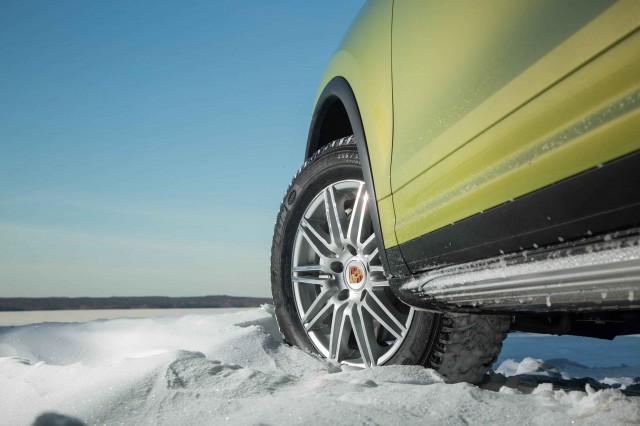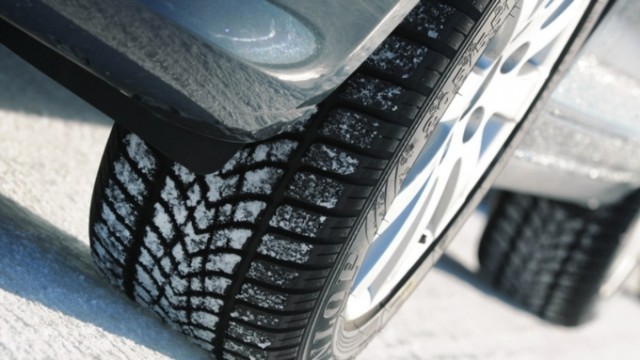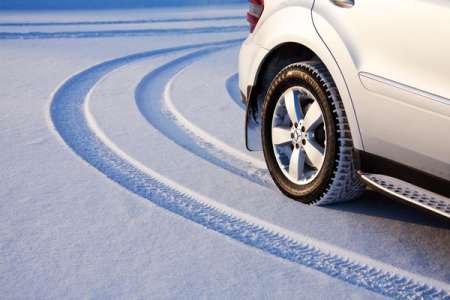When to put on winter tires: new law and weather conditions. The Ministry of Emergency Situations and the Traffic Police urge to “change the shoes” of the car as soon as possible
The Ministry of Emergency Situations and the State Traffic Safety Inspectorate urge you to “change the shoes” of your car as soon as possible. Auto experts share true signs optimal timing for “re-shoeing”.
Experts are confident in the need to change summer tires at an average daily temperature of +5 to +7 degrees. It is better for motorists to change their tires for winter ones on October 5th. "Tinsmith's Day" 2017 Novosibirsk region may arrive as early as October 6 – weather forecasters promise sleet and morning ice on the roads. 
“Tires need to be changed now,” says Alexey Nosov, executive secretary of the Auto Moto Association (AVAMT). – Summer tires lose their properties when the average daily temperature reaches plus 7.
If the temperature drops below, summer tires stop working and they lose their grip on the road. Summer tires are designed to operate at higher temperatures, which is why their composition is tougher.
Regardless of whether there is snow and ice on the road or not, at temperatures below 7 degrees it is necessary to change shoes winter tires. The best indicator when this needs to be done is to turn on the heating in houses. 
The traffic police advises car owners to change summer tires to winter when the average daily air temperature drops to 5-7°C for at least a week.
Changing tires in a timely manner will allow the driver to confidently cope with road situations associated with adverse weather conditions. This, in turn, will help to significantly reduce the number of road accidents, and therefore save the lives and health of road users.
Drivers also need to psychologically adapt to winter driving style. It is necessary to refrain from sudden lane changes and other maneuvers without ensuring their safety. 
Also, do not forget about the need to maintain distance and lateral spacing between vehicles.
It is mandatory to drive a car with external lights on at any time of the day or night; in bad weather, be sure to use fog lights, and in conditions of heavy fog, reduce the speed to the maximum safe and drive with the hazard warning lights on.
Drivers need to be extremely careful when driving across bridges, railway crossings, at multi-level intersections of roadways and interchanges. It is also necessary to concentrate near pedestrian crossings, and when approaching a zebra crossing, reduce speed in advance, warns the traffic police.
Proponents of changing tires late most often motivate this by the fact that with an early change, tread wear increases and studs may fall out. Proponents of early tire changes want to prepare for the season in advance and put winter tires, while it is still quite warm.
Indeed, with prolonged use of winter tires at high temperatures, their wear increases, so if you install winter tires too early, their service life may decrease somewhat. On the other hand, if you want to install winter tires when the first snowfall occurs, there is every chance you won’t even get to the tire shop. How to find the golden mean?
The timing of replacement depends on whether you change the wheels yourself or entrust it to a tire service. If you change your tires at a tire shop, you should do it in advance, since when the temperature drops, the queues at these organizations grow like a snowball. 
If you change the wheels yourself, then you can delay the installation of the winter kit a little. The timing of tire replacement varies from year to year. For example, in 2016 the author changed tires on October 16, in 2015 - on October 5.
In any case, it is better to be prepared in advance for changing tires. Even a small accident when snow falls unexpectedly, as always, will cost you more than a pair of lost studs or slightly more than usual tire wear.
When is it legal to switch to winter tires?
Let's consider paragraph 5.5 of Appendix 8 to the technical regulations of the customs union TR CU 018/2011 On the safety of wheeled vehicles vehicles:
5.5. It is prohibited to operate vehicles equipped with tires with anti-skid studs. summer period(June, July, August).
It is prohibited to operate vehicles that are not equipped with winter tires that meet the requirements of paragraph 5.6.3 of this appendix during the winter period (December, January, February). Winter tires are installed on all wheels of the vehicle.
The terms of the operation ban may be changed upward by regional authorities public administration member states Customs Union.
So, what can be understood from this paragraph:
During the summer months (June, July, August) only studded tires are prohibited. 
During the winter months (December, January, February), only winter tires are permitted. You can put both studded and non-studded tires on your car. The main thing is that they are marked “M+S”, “M&S” or “M S” and the corresponding drawing (in the picture on the left).
The period of prohibition of operation can only be increased local authorities and cannot be reduced. Those. In your region, for example, the use of studded tires may be prohibited from May to September. At the same time, regional authorities cannot reduce the period of the ban, i.e. From June to August, cars in all regions must not use studs.
Therefore, the following usage periods exist car tires:
Summer tires(without M+S marking, etc.) can be used from March to November.
Winter studded tires (marked M+S, etc.) can be used from September to May.
Winter studless tires (marked M+S, etc.) can be used all year round. 
Thus, if you have summer tires (without markings) and winter studded tires, then you must replace them during the fall, i.e. from September to November.
AdvertisingEvery year, as cold weather approaches, drivers begin to wonder when to put on winter tires. Currently, the answer to this question is partially regulated by a regulatory legal document.
Changing tires in a timely manner will allow the driver to confidently cope with road situations associated with adverse weather conditions. This, in turn, will help to significantly reduce the number of road accidents, and therefore save the lives and health of road users.
General recommendations for replacing summer tires state that you need to go to a tire shop when the average daily temperature is between +5 and +7 degrees. Summer tires in such weather become “oaky” and ineffective, especially on slippery roads.

“We need to start changing summer tires to winter ones now. Due to the possible sharp cold snap, the driver’s main task is to have time to prepare the car before ice or snow appears. The properties of modern winter tires do not change when used in warm weather, and the tires do not significantly wear out. Remember, if the tires of your car are not suitable for the weather, it is dangerous to drive it,” the regional traffic police gave recommendations.
Director of the Podkova retail chain Vladimir Mavrin explained that if, in conditions of the first snow and ice, the owner does not have an urgent need to use the car in the morning, tires can be replaced at a later date, since by lunchtime the temporary snow cover and ice have already melted . If trips are made in the morning and at night, then you can change tires now.
Let's consider paragraph 5.5 of Appendix 8 to the technical regulations of the customs union TR CU 018/2011 "On the safety of wheeled vehicles":
5.5. It is prohibited to operate vehicles equipped with tires with anti-skid studs in the summer (June, July, August).
It is prohibited to operate vehicles that are not equipped with winter tires that meet the requirements of paragraph 5.6.3 of this appendix during the winter period (December, January, February). Winter tires are installed on all wheels of the vehicle.
The terms of the operation ban may be changed upward by regional government bodies of the member states of the Customs Union.
If the tire is friction, it can be changed already from mid-September; new studded tires can and even need to be installed. Some motorists are afraid to install tires in advance, believing that driving on asphalt negatively affects the service life and leads to the loss of studs. But this is not so, because even in winter there are often areas with bare asphalt on the road in the city, and the car overcomes them normally.

The most important thing is that the new tire goes through the running-in process correctly, the expert notes. To do this, it is recommended to cover 500-700 kilometers at a speed of no more than 60 km/h without sudden acceleration, turning and braking. So, the spike will take its place and will serve for a long time. Moreover, the running-in process is better on asphalt.
Manufacturers do not recommend starting break-in with the onset of cold weather. Sub-zero temperatures will require the new tires to immediately start working completely. It is better to prepare for winter in advance and “change” your car before the frosts. Otherwise, the tires will wear out incorrectly and the car will become less drivable.
Please note that both under-inflation and over-inflation of tires will significantly increase tire wear. But what is most important is that the studs in lowered wheels do not stay long. Without the ability to gain a foothold, they will fall out very soon. During this period, driving through deep holes or overcoming high curbs is not advisable; this can easily damage unrolled tires. During this period it is worth choosing smooth road, so that later you can feel confident even off-road."
Noticed a typo or error? Select the text and press Ctrl+Enter to tell us about it.
Let's consider paragraph 5.5 of Appendix 8 to the technical regulations of the customs union TR CU 018/2011 On the safety of wheeled vehicles:
5.5. It is prohibited to operate vehicles equipped with tires with anti-skid studs in the summer (June, July, August).
It is prohibited to operate vehicles that are not equipped with winter tires that meet the requirements of paragraph 5.6.3 of this appendix during the winter period (December, January, February). Winter tires are installed on all wheels of the vehicle.
The terms of the operation ban may be changed upward by regional government bodies of the member states of the Customs Union.
So, what can be understood from this paragraph:
- During the summer months(June, July, August) only studded tires are prohibited.
- During the winter months(December, January, February) only winter tires are allowed. You can put both studded and non-studded tires on your car. The main thing is that they are marked “M+S”, “M&S” or “M S” and the corresponding drawing (in the picture on the left).
- The period of prohibition of operation can only be increased by local authorities and cannot be reduced. Those. In your region, for example, the use of studded tires may be prohibited from May to September. At the same time, regional authorities cannot reduce the period of the ban, i.e. From June to August, cars in all regions must not use studs.
Thus, there are the following intervals for using car tires:
- Summer tires(without M+S marking, etc.) can be used from March to November.
- Winter studded tires(marked M+S, etc.) can be used from September to May.
- Winter studless tires(marked M+S, etc.) can be used all year round
Use of all-season tires in 2016 and 2017
IN separate group It is necessary to highlight drivers who use so-called all-season tires (intended for use throughout the year).
All-season tires can be used during the winter months (December - February) only if they are marked as “M+S”, “M&S” or “M S”.
Otherwise, the use of all-season tires in the winter months is not allowed.
Fine for improper use of tires in 2016 and 2017
In 2016 and 2017, the Code of Administrative Offenses does not contain references to Technical regulations Customs Union. Those. fine for not having winter tires cannot be imposed. However, a draft of such a fine exists.
Nevertheless there is fine for using worn out winter tires- 500 rubles (or warning). This fine can be imposed on a driver using winter tires (marked M+S, etc.) whose tread depth at the most worn place is less than 4 mm. Please note that a fine is imposed only when operating a vehicle on an icy or snowy road surface.
Good luck on the roads!
WHEN TO SHOE WINTER TIRES ACCORDING TO THE LAW
On January 1, 2015, a new technical regulation came into force throughout the entire customs union, which includes Russia, which obliges even those who try to put off changing tires until the last minute to change their tires according to the season. Therefore, now all car owners, regardless of whether they want it or not, must drive on winter tires from December 1 to February 28, and on summer tires from June 1 to August 31. The rest of the time, everyone must decide for themselves which tires are more comfortable for them, depending on the weather.
WHEN TO WEAR WINTER TIRES ACCORDING TO THE WEATHER
It is believed that when the average daily air temperature drops to +7, then driving on summer tires is already dangerous. Therefore, car owners are advised to use this criterion when deciding to change tires. Many will reasonably note that at this temperature the road is not yet covered with ice, which means you can drive on summer tires. But this advice is for responsible drivers.
The point is that if the temperature for a long time remains at +5-7 degrees, this usually means that frost will come soon. And if one morning you wake up and it’s icy outside, perhaps going to a tire shop will be quite risky.
Winter is approaching, and now many drivers are wondering when is the best time to change summer tires to winter tires on their cars.
It should be noted that winter and summer tires have a number of significant differences. Winter tires are designed in such a way that they provide stronger grip on the road surface. This is especially important in conditions of poor visibility and slippery road surfaces. In winter, in many regions of our country there is often icy conditions on the roads. In addition, the situation on the roads is often complicated by snowfalls.
The Technical Regulations of the Customs Union are in force on the territory of the Russian Federation, namely its section “On the safety of wheeled vehicles.” Car owners must also comply with it. Failure to comply with this regulation can lead to emergency situations and threaten the lives of both drivers and passengers.
The traffic police recommends “changing” your car’s shoes to winter tires when the average daily temperature drops to +5...+7, but provided that this temperature lasts for at least one week. When switching to winter tires, the driver needs to take care not only of his own safety. Switching to winter tires reduces the number of accidents.

But it is necessary to remember that when switching from summer tires to winter tires, new tires should be broken in. Experts advise keeping the speed no higher than 80 kilometers per hour for the first 100 kilometers. By the way, it’s better to break in new winter tires before the snow falls.
Experts note that after changing summer tires to winter tires, you should also change your driving style. In winter, you should avoid sudden maneuvers on the roads. It is important to keep your distance. Also in winter, it is necessary to drive around the clock with external lights on.






